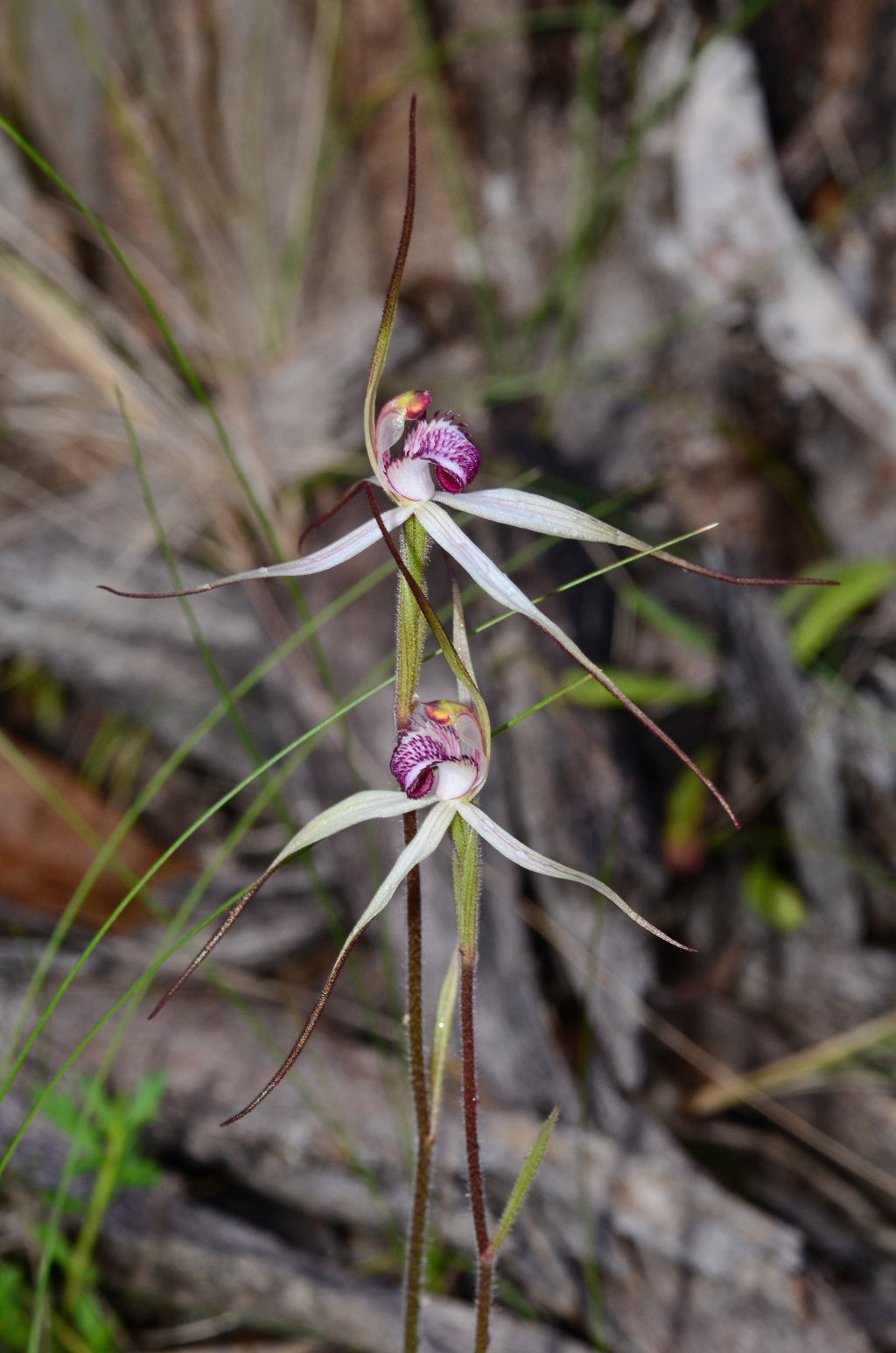Caladenia colorata
D.L.JonesFlowering plant 10–30 cm tall. Leaf 4–10 cm long, 5–9 mm wide, blotched with red at base. Flower usually solitary, with a musky fragrance; perianth segments 2.8–4 cm long, cream-green with maroon labellum, sometimes wholly blood red or mauve to pink with dark glandular tails; sepals flattened at base, 2–4 mm wide, tapered to a long tail, terminal osmophore 8–12 mm long densely covered with dark sessile or stalked clavoid glands; petals shorter than sepals, tapered to linear-filiform, heavily glandular cauda. Labellum curved forward with apex recurved and lateral lobes erect, lamina ovate, very obscurely 3-lobed, 10–14 mm long and 7–8 mm wide (when flattened), wholly red, cream and red or mauve and red; distal margins of lateral lobes fringed with linear calli to 1.5 mm long; margins of mid-lobe with numerous short, tooth-like, white-tipped calli decreasing in size towards apex; lamina calli in 4–6 rows, the central ones extending onto the mid-lobe, narrow, foot-shaped, to 1.3 mm long at base of lamina, decreasing in size towards apex. Flowers Aug.–Sep.
LoM, Wim, GleP, GipP. Also SA. Known currently from a few localities in far western Victoria between the lower Glenelg River and the western block of the Little Desert National Park, in woodlands on sandy soils.
Plants from Victoria are only tentatively placed in Caladenia colorata until they are studied in more detail.
The flowers of C. colorata are extremely variable in colour, and some plants may key out to C. rosella. However, C. colorata, has labella with fewer, shorter marginal calli and more numerous, smaller lamina calli.
 Spinning
Spinning

